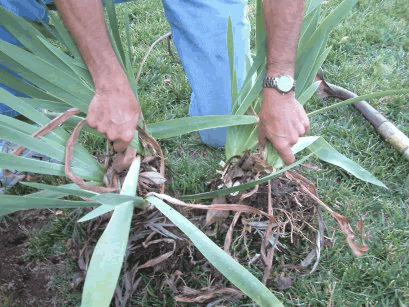|
Pruning
Pruning encourages a plant to stop growing in one direction and start growing in another. How and when depends on two factors: the effect you wish to achieve (such as prolonged bloom) and the growing characteristics of the plant. Follow the 3-D’s of pruning by removing the Dead, Diseased and Diagonal. It’s very helpful to observe a plant’s growth pattern over the growing season. Most deciduous shrubs produce new stems from the plant’s base. Most evergreens form a permanent framework of branches. Conifers have their own growing patterns. Learning to recognize “growth buds” will help identify where to make cuts.
The basic rule of pruning is that cutting a terminal bud (at the tip of a branch, or shoot) forces the branch to develop in the direction of other growth buds. Good pruning practices will provide plants with the necessary air circulation near the plant’s’ center. Consult a reference book on garden pruning (Sunset’s Western Garden Book is an excellent source) for more information about how and when to prune plants in your garden.
Consult a reference book on garden pruning for more information about how and when to prune plants in your garden. Three excellent sources are:
| • | Sunset’s Western Garden Book |
| • | RHS Pruning and Training by Christopher Brickell and David Joyce |
Guidelines on pruning:
| • | Trees and Shrubs: Prune young trees and shrubs just enough to develop strong, shapely forms. Prune flowering shrubs to produce more blossoms. Prune older shrubs to remove unhealthy or unwanted branches. |

Not over-pruning reduces moisture loss.
| • | Flowering shrubs: In general, prune after flowering (spring or summer), depending on bloom times. Roses and deciduous trees should be pruned in late winter; conifers in early spring; and tender or semi-tropical shrubs in late spring. |
| • | Non-woody plants: Many perennials and grasses – even herbs and vegetables – may benefit from periodic grooming (pinching, deadheading, cutting back). |
| • | Repeat-blooming perennials: Shear repeat-blooming perennials, such as lavender, after each bloom. Use hedge shears, scissors, or sheep shears. Do the same for loose-stemmed flowers, such as alyssum, to induce a fresh round of blooms in midseason. |
| • | Long-blooming perennials: Deadhead long-blooming perennials, such as daylilies, coreopsis, and geraniums, by snipping off the spent flowers with shears. The result will be a longer bloom. |
| • | Foxglove: For a repeat show, cut faded stalks down to 4-6 inches. |
| • | Iris: Divide overgrown iris clumps by digging out their shallow rhizomes in the fall. Snap or cut them apart at their joints and discard any rhizomes that do not have a fan of leaves. |

Dividing bearded iris
| • | Multi-stemmed perennials: To create more plants from multiple-stemmed perennials such as red-hot pokers, dig up the entire root ball and split it with a sharp shovel or fork. Take sections that contain both roots and green stems, trim the stems to 4-6 inches, and replant. |
| • | Grasses and Ferns: Cut off browned or damaged leaves near the center of grasses and ferns when you see new growth in spring. Comb your fingers (wear garden gloves) through foliage of ornamental grasses to remove old leaves. Cut back ornamental grasses, salvias, lavender, and deciduous perennials to 4-6 inches above the ground to make room for new growth. Do this job in late winter when dead plant parts can easily be pulled from the ground. |
| • | Flowering hedges: Lightly trim flowering hedges early in the year – forsythia, for example – immediately after flowering by cutting out all, or a portion of, the old, flowering wood. Flowering hedges are generally more effective and flower more abundantly if they are allowed growth before they are pruned. |
| • | Large, leathery leaf plants: Plants that have large, leathery leaves, such as Catalina cherry, or strong heavy stems, such as certain types of roses, should be pruned with a sharp knife for a neat cut. Shears and trimmers destroy the appearance and integrity of the leaf shape, causing the damaged leaves to turn brown before they fall. |
|
